Honda Gold Wing GL1800 review - Manual and DCT bikes ridden
The Goodwood Festival of Speed gave Toad a chance for the first time to sample the Honda Gold Wing GL1800 with a manual gearbox

Member for
54 years 8 monthsIF you are a regular here at Visordown, you’ll probably already know how much of a fan I am of the Honda Gold Wing GL1800 in any and all its forms.
When you need to travel a sizable distance, with space for two people, and their clothing and want to travel comfortably and with all the mod-cons, there really isn’t a better way to move about the planet.
Before we get going though; this is primarily a review talking about the differences between the manual and DCT versions of the bike. For a more rounded and full review of the model, click this link or scroll a little further down the page.
This latest ride on the top-spec tourer came about because I had been lucky enough to get some invites to the Goodwood Festival of Speed, and with my friend riding shotgun, we really needed something with room for two, class-leading comfort, and a sat-nav to help me avoid any traffic.
The bike arrived the week leading up to the event, and to my surprise, Honda hadn’t sent a DCT version of the Gold Wing to me, this one had a manual clutch and traditional gearbox. Honda is always happy to tout its DCT bikes, and while I’m of the opinion that the DCT system belongs on the Gold Wing more than any other bike, it did at least give me a chance to put that theory to the test.
First impressions of the manual Gold Wing were good, the clutch is a little on the heavy side, although with the 1833cc flat six-cylinder engine pumping out 125 bhp and 125 lb-ft of torque, it really has to be a fairly hefty item. With an initial introduction ride to pick up my daughter from school (and fill up the 21-litre fuel tank), I put the Gold Wing to bed and ready for an early start the following day to begin the ride south to the event.
It was a fairly uneventful ride down to Goodwood, and we manage (somehow) to dodge the forecasted showers and it was all going swimmingly. My passenger was mightily impressed with the comfort of the bike, with the screen and heated seat being the biggest plus points. On its tallest setting the electrically adjusted screen was providing the pair of us with enough shelter from the wind that we could ride with visors up and even have coherent conversations all while trundling down the motorway.
As we drew nearer to the event things quickly went from going well to going slowly, and the closer we got, the more congested it became. And then the rain arrived… At speed, the front end of the Gold Wing creates a little bubble of still air for the rider and passenger, seemingly impenetrable to raindrops of any size and weight. With the wind now sucked out of our sail I was starting to get soaked. Thankfully the Gold Wing is still a tool to filter on, although the stop-start nature of the last five miles did give me a bit of an ache in my left hand. It’s not something that would have happened on a DCT model. Had I been riding the Dual Clutch Transmission version of the bike I’d have flicked it into manual mode, and done all the gear shifting via the buttons on the lefthand handlebar. Filtering in automatic mode is possible, but I prefer to be the one solely responsible for gear selection when I’m threading through traffic.
Clutch aside, the gearbox is just what you’d expect from Honda; slick, direct and otherwise a peach to use. Where the DCT gains seven ratios to choose from, the manual version gets the standard six, although it’s not that you’ll really notice the missing cog when you ride it out on the road. The sixth gear on the manual bike is a lazy overdrive option, dropping the revs to around 2,000rpm at 70mph. At that speed, the flat-six is barely breaking a sweat and is as smooth and refined as you’d expect from a bike designed for wafting its way across continents.
If there’s one thing I’ll take away from my time on the manual Gold Wing it’s just how much the GL1800 makes sense in its DCT form. The manual ‘box is great, and had DCT never been invented the manual version of the GL1800 would be just as good. But the auto gearbox (that Honda doesn’t want to be called an auto) is so bloody good and still gives you the chance to change gear on your own terms, just makes so much sense. The fact you can go from zero to 60mph in around three and a half seconds without doing anything more than twisting your wrist is one reason, but there is another thing that the manual bike just can’t do quite as well, overtakes. On a bike this bike you have to pick your battles when making your way through slower-moving traffic. On the DCT bike, all it takes is two clicks of the gear-down button and you’re already in the meat of the torque and ready to get going. Trying to do this on the manual bike is nowhere near as seamlessly smooth and well-mannered, and there isn’t a foot-and-hand combination on the planet that can switch gears as quickly as the Honda system can.
Honda GL1800 Gold Wing Tour DCT (2021) Review | Visordown
The Honda Gold Wing has been the last name in two-wheeled luxury and refinement ever since the 1980s. After an evolution period of more than 30-years, in 2021 the latest, greatest of the family landed. The GL1800 Gold Wing Tour DCT.
The pinnacle of the Gold Wing range features literally every conceivable bell and whistles you could imagine on a long-distance touring motorcycle, including a riders airbag stashed where the fuel filler cap should be.
To say the top-spec Gold Wing is well equipped is like saying that Stephen Hawking was ‘fairly smart’. Although all that spec and kit does come at a price.
Honda GL1800 Gold Wing Tour DCT (2021): Price and Features
As tested, the big GL comes in at £30,699 which is, however you look at it, a large amount of cash. To help make the figure easier to swallow though, let’s take a look at how it shapes up pound per kilo.
The big ‘Wing weighs in at 383kg ready to ride. That means you are paying just £80 for each kilo of weight, luxury and refinement. Let’s compare that to another flagship motorcycle, the Ducati Panigale V4R for instance. That weighs 193kg and costs £34,995 meaning each kilo of Italian excess is costing you a whopping £181.
The maths doesn’t lie, meaning the Honda Gold Wing is actually very good value.
With each £80 kilo of Honda, you buy you get a carefully selected set of goodies to make covering distance in any weather a much easier and pleasurable experience. To start with there is the full-colour TFT dash with in-built sat-nav and AM FM radio and Apple CarPlay. There is a vast, electric screen, heated grips and heated seats and that’s top of the cruise control, electronic suspension system.
And the options don’t stop there. Our test bike also featured passenger arm-rests, passenger audio controls, front fog lights, upper and lower wind deflectors (these work very well), and an auxiliary power socket in the boot.
Honda GL1800 Gold Wing Tour DCT (2021): Engine
The real joy of riding a Gold Wing comes from that 1,833cc 24-valve flat six engine. It purrs away with turbine-like efficiency on the motorway, and shrieks with audible delight when you push on to the 6,000rpm redline.
The closest thing I can compare this engine to is, strangely, a car. My dad took me for a spin in a Jaguar XJ12 once and it kind of had the same feel to it. That feeling of endless torque and power matched with a buttery smooth delivery. Peak power is a claimed 124bhp, while torque is 125lb-ft and they are important numbers because you are going to be calling on them both from time to time.
I’m not saying that progress is slow on a Gold Wing because it’s really not. There are very few two-wheeled ways of transporting this much luggage, two people and 21-litres of fuel this quickly in this much comfort. But from time to time you will find yourself scratching the redline. It could be a necessity, or maybe just that when you do it sounds so bloody good.
The trouble with troubling the rev-limiter though is that it isn’t the big ‘Wing’s most efficient riding style. With a 21-tank, the GL1800 does lag behind some of its competition in terms of outright fuel capacity. Range, if you ride it like a proper tourer, should be around 200 to 230-miles. Hammer it like you’re riding a naked and you’ll be looking at a more realistic 160-miles.
The Gold Wing is equipped with riding modes covering Rain, Economy, Tour, and Sport. Each tune the suspension, throttle map, and brake bias for the desired application. During our weekend away on the Honda, I kept the bike in Economy for most of the riding and let the electronics smooth out the gear changes. The throttle map was also the softest, pleasing my pillion no end.
Should you need to make progress you can kick the bike down a gear or two, the paddles on the left handlebar are within easy reach but be warned, it won’t hold onto the gears for very long. The best bet is to plan ahead a little and knock the bike into one of the more dynamic modes prior to calling that peach of an engine into action. Or flick it into manual and take charge of the changes yourself.
For motorway cruising, Tour is a perfectly appropriate mode, and to be quite honest, if Sport mode wasn’t included on the flagship Honda, I don’t think anyone would notice! You still have all the power, a nice direct throttle map, and the auto kick-down happens without too much provocation.
Honda GL1800 Gold Wing Tour DCT (2021): Handling
With a wheelbase of 1,695mm and a kerb weight as tested of 383kg, it never fails to astound me as to how good a Gold Wing handles. The engine is mounted so low in the chassis that the handling in pretty much any situation is very good. Trickling through town is obviously not the bike’s forte, but even that really slow speed stuff is actually surprisingly easy. Even two-up with packed panniers.
Take the Gold Wing out of the urban sprawl though and it feels like it really comes into its own. Be it a mountain route or twisty B-road, the Honda stops and steers excellently. The 130mm of ground clearance can be an issue, with the pegs decking out much to the better halves displeasure, but the bike will hold a line in a turn and there is very little you can do to upset it.
One of the most impressive things about the GL1800 is how well it stops. And I’m not talking about braking distances here – although they are again very good. It’s just how composed it feels on the brakes. For this generation of Gold Wing, we have Honda’s innovative double-wishbone front end that is linked to a super-duper electronic suspension system. It makes the act of hammering on the anchors an almost serene feeling. There is a small amount of dive through the front end, but for the most part, the bike keeps surprisingly level throughout. It really is something that has to be experienced to be fully understood.
The fun doesn’t stop there either, as the brakes don’t affect the bike like they do with conventional forks. It doesn’t seem to stand up on its haunches and instead just continues on its path. Conversely, ham-fisted mid-corner throttle inputs will do very little to upset the balance or line of the bike.
Honda GL1800 Gold Wing Tour DCT (2021): DCT
I’ve ridden a couple of this generation of Gold Wing, this all singing and all dancing Tour DCT Air Bag model, and the more ‘lightweight’ standard bike (the bagger that can’t be called a bagger) in manual gearbox form.
With a manual gearbox linked to that 24-valve flat-six engine, the Gold Wing is great. You have a light clutch, slick gearbox and the ability to mix the revs yourself for the most engaging riding experience. For me though, the DCT just makes total sense, especially on this version in its biggest and most extravagant form.
The DCT system has been honed and fettled for the last eleven or so years now, and while some may still see the system as superfluous in many of Honda’s offerings, it’s very hard to argue against its inclusion on either of the ‘Wings.
Honda GL1800 Gold Wing Tour DCT (2021): Comfort
With heated seats (rider and passenger), heated grips and that expansive and fully adjustable electric screen, the Gold Wing Tour is the ultimate means of transporting two people, on two wheels in comfort. The wide seat does mean shorter riders will be stretching at a stop, but its not a huge issue.
A change made for this year was welcomed by my pillion in the form of a slightly more reclined pillion seat. The previous model had just 16° of lean to the pillion’s backrest, forcing the pillion into a slightly tense seating position. For 2021 the recline on the perch is a much easier going 23°. The net result was that after six hours in the saddle there were no complaints from by back seat rider.
Rider comfort is as you would expect from a bike like this. The bars are low-set and perfectly placed. The pegs leave your legs in a gentle enough bend that there is minimal pressure on your knees and hips, and you are obviously cosseted from all the wind and weather by that humungous screen. And while we’re on the screen, Honda has included a neat trick for those really hot days when a little airflow is needed. Tapping the top of the front fairing will extend a small spoiler that scoops some of the air that flows under the screen and aims it at the rider’s face. It’s not a full-on arctic blast either, just a nice refreshing glug of air if it’s needed.
Honda GL1800 Gold Wing Tour DCT (2021): Tech and TFT
Another addition for the 2021 model year is the Apple CarPlay system, which allows you to answer calls, take sat-nav directions and play music with a Bluetooth enabled phone and headset. The system is easy enough to set up and if you do want the music option through the speakers without using a headset – don’t fear. You only need a Bluetooth connection to set up the system. Once you are rolling you’re fine to turn it off.
To be honest, satnav directions via a headset are pretty much redundant, as the large TFT screen (seven inches) is perfectly capable of keeping you on the right track. It’s about as big as a car’s in-built satnav, which is hardly a surprise and is extremely easy to set up via the multi-direction joystick in the centre console.
Honda GL1800 Gold Wing Tour DCT (2021): Luggage
In Tour form, the bike includes the two side cases of 30-litres in capacity each and the top-box that holds a hefty 50-litres. Tons of luggage space, that may be but it is worth opting for the optional pannier and top-box liner bags to keep everything in check.
My partner and I managed to hack down to Goodwood with all our clothes for the weekend, plus changes of shoes, toiletries, and some snacks for arrival (beer and wine!). On top of that, we even managed to squeeze in my leathers for riding up the hill. That’s not bad going for a bike that features such a neatly designed luggage system.
Should I buy the Honda GL1800 Gold Wing Tour DCT (2021)?
When you first jump on the GL1800 you’ll likely do what I did and just giggle into your helmet while forcing it to do things it really shouldn’t be able to do. But the more you live with the bike the more you’ll understand it’s much more than just a machine to delight with its ability to be excellent.
It’s the boring stuff too that it just seems to nail every time. Those really mundane, crappy rides, where the weather is against you, and the traffic wants to kill you that this thing begins to come into its own.
Sure, there are some areas for improvement, fuel capacity being one, but even with some minor blips on the radar, it's still the most entertaining, comfortable and well equipped motorcycles you will ever be likely to ride.
dc27.jpg?itok=bcSFXoB7)
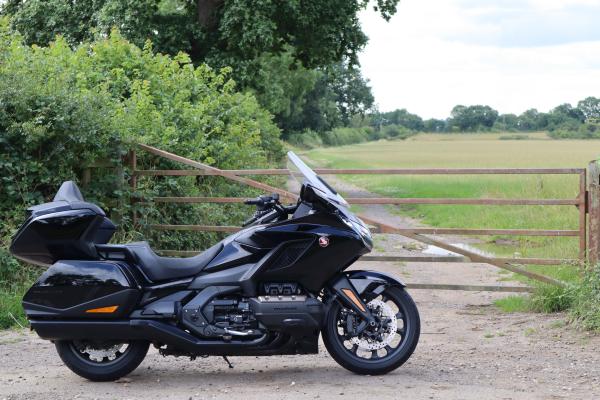
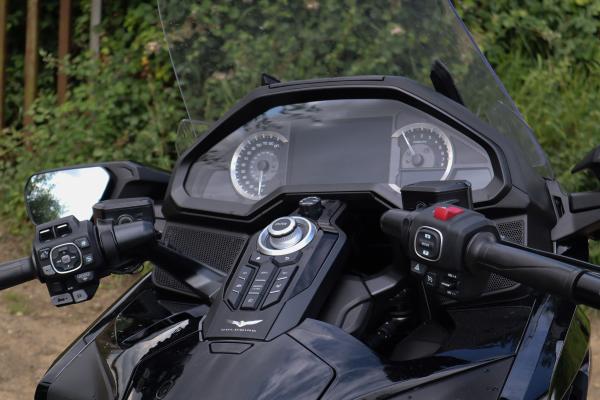



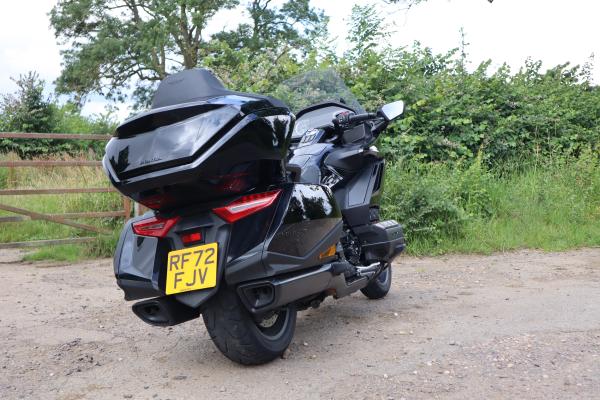
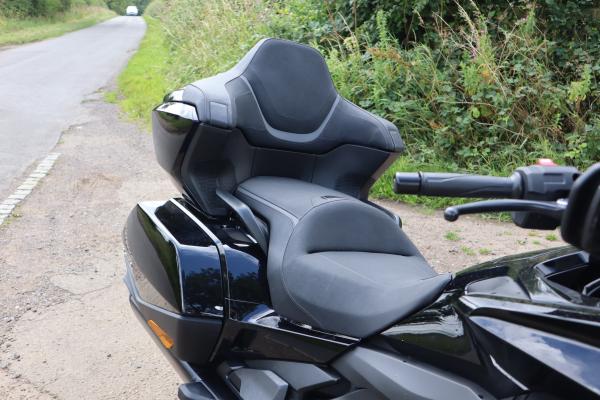
_0d015.jpg?itok=eC-LPxwu)
f4ea.jpg?itok=NriHb_j7)
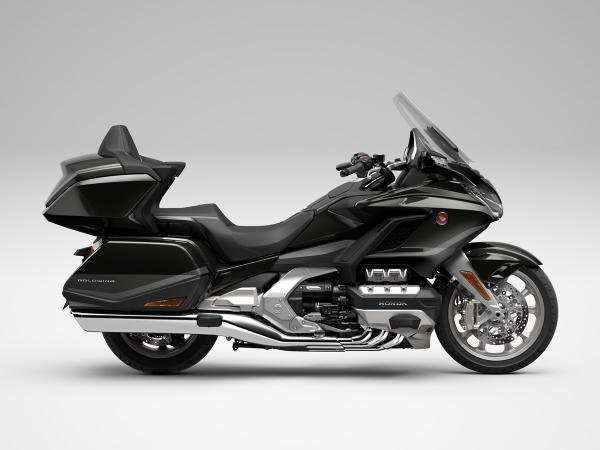
d64a.jpg?itok=9PWU0JtF)

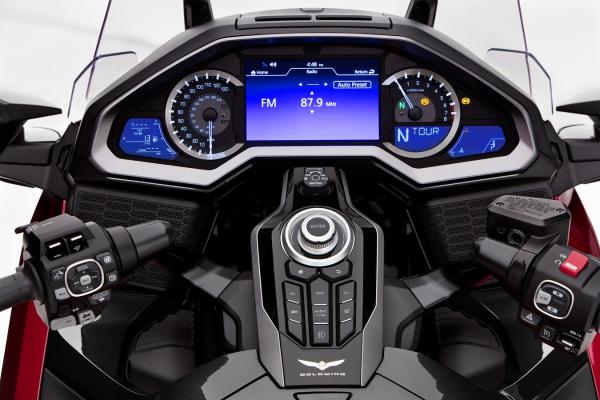
e47e.jpg?itok=o-qs4d_n)
bd99.jpg?itok=WCKvLSy_)
c9d6.jpg?itok=wMc1Mjvg)
0871.jpg?itok=Io-xwoUZ)
090d.jpg?itok=WznbHlv2)
9814.jpg?itok=ZgemAMY_)
deff.jpg?itok=eEcXMy3X)
c8ff.jpg?itok=kz0uOW-h)
eb53.jpg?itok=2x-f4EBZ)
25b1.jpg?itok=o5OfXG0o)









